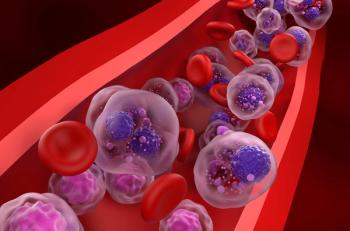
Socio-Economic Factors, Policy Changes Impact Disparities Among Breast Cancer Patients
Session at at the San Antonio Breast Cancer Symposium featured several abstract presentations on disparities in health care access in breast cancer, including research on the necessity of avoiding a one-size-fits-all approach to medicine.
Health care providers should be aware of how socio-economic factors and policy changes have affected disparities among patients with breast cancer, according to a special session at the San Antonio Breast Cancer Symposium 2020 Virtual Meeting.
The session featured several abstract presentations on disparities in health care access, including research on racial and economic disparities and findings on the necessity of avoiding a one-size-fits-all approach to medicine. Several presentations discussed how researchers can better understand ancestral differences in breast cancer between patients of African and European ancestry.
“Women of African ancestry with breast cancer experience disproportionately high mortality rates compared to women of European ancestry,” said Minoru Miyashita, MD, PhD, of the University of Chicago, in a press release. “Comprehensive understanding of the contribution of genetic ancestry is crucial to improving treatments outcomes for African ancestry women.”
Other investigators have addressed racial differences in breast cancer immune microenvironments. By leveraging data from the Carolina Breast Cancer Study, a team at the University of North Carolina at Chapel Hill identified 3 global phenotypes of the immune response that vary by age, race, tumor grade, and subtype. According to presenter Alina M. Hamilton, MS, they have also identified widespread differences in immune cell-specific expression in basal-like breast cancer and further racial differences, offering potential target options to reduce racial disparities in the disease.
Fangyuan Zhao, PhD candidate at the University of Chicago, said her team found that Black patients have lower odds of achieving pathologic complete response after new adjuvant chemotherapy, with the largest racial disparity among hormone receptor-negative and human epidermal growth factor 2-positive patients.
“Delayed initiation of treatment and failure to complete the full regimen of chemotherapy contributed to the racial disparity in the single-institution cohort,” Zhao said. “Adjusting for tumor subtype, clinical stages, a delay in treatment did not fully explain the racial disparity.”
A separate presentation examined gene expression profiles of Ghanaian and Ethiopian triple-negative breast tumors. According to the press release, women with shared West African ancestry have disproportionately higher breast cancer mortality in a more frequently diagnosed with triple-negative breast cancer, explained Rachel Martini, PhD, of the Weill Cornell Medical College.
“After quantifying genetic ancestry from our [RNA sequencing] alignments, we were able to identify an African ancestry-specific gene signature that delineated Ghanaian and Ethiopian individuals and additionally showed differences in immune cell trafficking in abundance between these 2 groups,” Martini said in the press release.
Researchers at the University of North Dakota investigated whether Medicaid expansion under the Affordable Care Act narrowed the gap between American Indian and white patients on breast cancer management and prognosis. With Medicaid expansion, the team found that the proportion of uninsured patients declined significantly, and early breast cancer diagnosis increased in American Indian patients, said presenter Anu G. Gaba, MD.
Although there was an across-the-board decrease in the proportion of patients who received first definitive treatment within 30 days of diagnosis following the expansion, the drop was significantly less in American Indians and in states that expanded Medicaid. The investigators found no effect on the 3-year mortality rate.
In a similar study, investigators at Case Western Reserve University presented evidence that Medicaid expansion in Ohio seems to have improved some income-based disparities in care processes and outcomes. According to the presentation, they found no significant effect of expansion on time to treatment for low-income women.
“Both before and after Medicaid expansion, low-income women in Ohio waited about 6 days longer for treatment,” said Johnie Rose, MD, PhD, in the press release. “There was, however, a significant narrowing of the gap between low-income women and controls in stage at diagnosis.”
Before expansion, the team found that 38.1% of low-income women had regional disease compared with local. After expansion, that rate was 30.9%. Furthermore, they found that after Medicaid expansion, the proportion of low-income women receiving reconstructive surgery increased from 12.1% to 16.7%. Both groups of women saw significantly increased rates of breast conserving surgery after Medicaid expansion.
REFERENCE
Special Session examines the diverse factors that drive racial disparities [news release]. San Antonio Breast Cancer Symposium; December 9, 2020.
Newsletter
Stay informed on drug updates, treatment guidelines, and pharmacy practice trends—subscribe to Pharmacy Times for weekly clinical insights.








































































































































































































